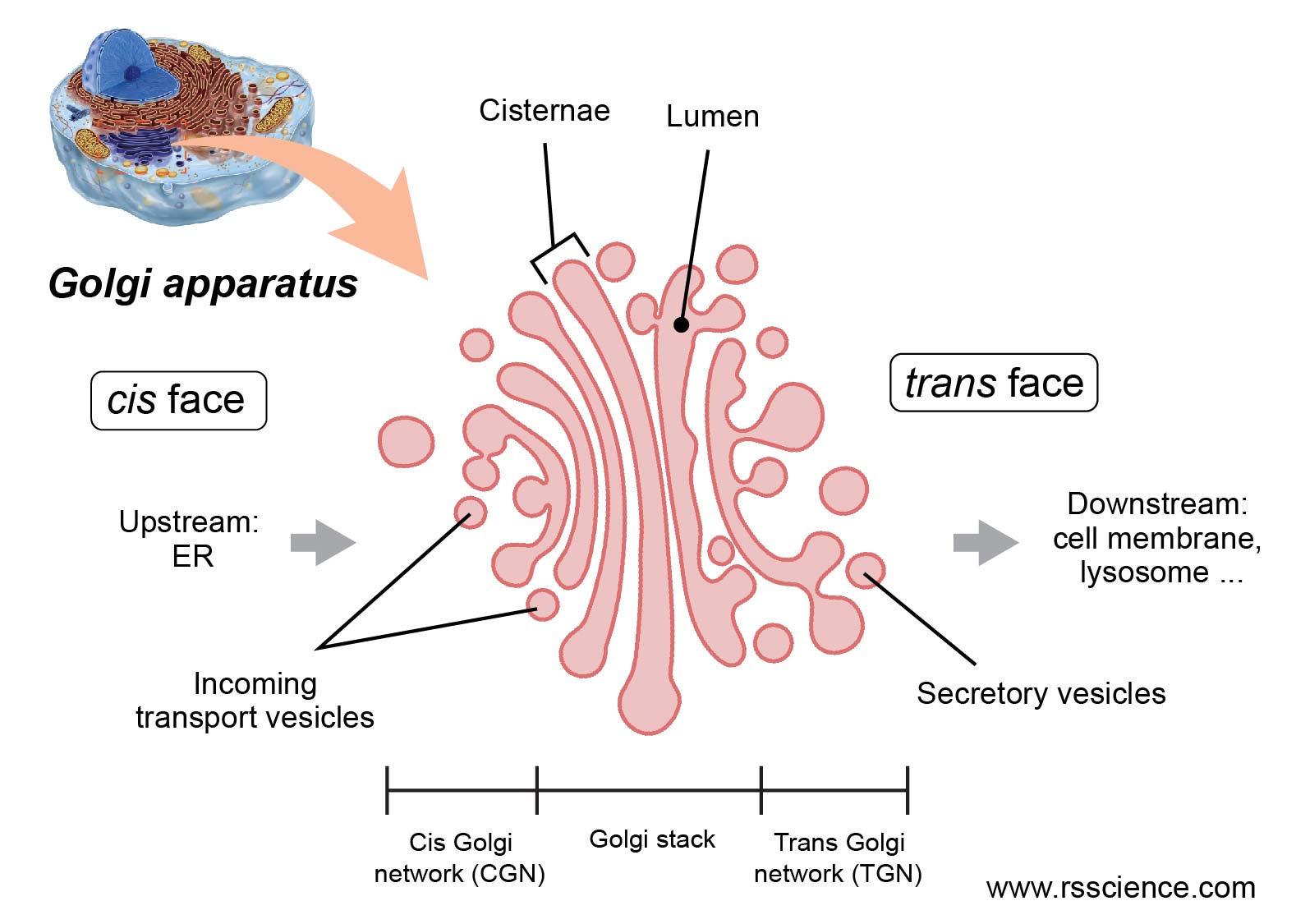Within the intricate landscape of the cell, the Golgi apparatus stands as a remarkable organelle with a multitude of essential functions. This complex structure, named after its discoverer Camillo Golgi, plays a pivotal role in processing, modifying, and transporting proteins within the cell. In this comprehensive blog article, we will delve into the world of the Golgi apparatus, exploring its structure, functions, mechanisms of protein processing, transport pathways, and its significance in cellular health. Throughout the article, we will rely on reputable sources to provide accurate scientific information.
Understanding the Golgi Apparatus
The Golgi apparatus, often referred to as the Golgi complex or Golgi body, is a membrane-bound organelle found in most eukaryotic cells. It consists of a series of flattened sacs known as cisternae, which are stacked together and organized into distinct regions.
Structure of the Golgi Apparatus
- Cisternae: The Golgi apparatus is composed of multiple cisternae, which are flattened membrane sacs. These cisternae are arranged in stacks called dictyosomes.
- Regions: The Golgi apparatus is typically divided into three regions: the cis-Golgi network (CGN), the medial-Golgi, and the trans-Golgi network (TGN). These regions have distinct functions in the processing and sorting of proteins.
Functions of the Golgi Apparatus
- Protein Modification: The Golgi apparatus is involved in the modification of proteins. It adds various molecular tags, such as carbohydrates (glycosylation) and lipids, to proteins, altering their structure and functionality.
- Protein Sorting: The Golgi apparatus acts as a sorting station, receiving proteins from the endoplasmic reticulum (ER) and directing them to their appropriate destinations within the cell. It packages proteins into vesicles for transport to specific cellular compartments or for secretion outside the cell.
- Vesicle Formation: The Golgi apparatus plays a crucial role in the formation of transport vesicles, which bud off from its cisternae. These vesicles carry proteins and lipids to various cellular destinations, including other organelles or the cell membrane.
- Glycosylation: One of the primary functions of the Golgi apparatus is glycosylation, the process of adding carbohydrates to proteins. This modification plays a key role in protein folding, stability, cell-cell recognition, and cell signaling.
- Lipid Processing: In addition to proteins, the Golgi apparatus is involved in lipid processing. It synthesizes certain lipids and modifies others, enabling their distribution to various cellular compartments.
 |
| Image resource: Rescience |
Protein Processing and Transport Pathways
- Secretory Pathway: The Golgi apparatus is an integral component of the secretory pathway, which involves the transport of proteins from the ER to the Golgi and then to the plasma membrane for secretion.
- Endocytic Pathway: The Golgi apparatus also plays a role in the endocytic pathway, where it receives proteins and lipids internalized from the cell membrane through endocytosis. These molecules are processed and sorted within the Golgi before being directed to their respective destinations.
- Retrograde Transport: The Golgi apparatus receives proteins from the ER through retrograde transport, allowing for quality control and retrieval of ER-resident proteins.
Significance in Cellular Health
The Golgi apparatus is critical for maintaining cellular health and functionality. Disruption of its structure or function can lead to various diseases and disorders, including genetic disorders affecting protein glycosylation, neurodegenerative diseases, and certain types of cancer.
The Golgi apparatus stands as a remarkable organelle with intricate functions in protein processing, modification, and transport within the cell. Its role in protein sorting, vesicle formation, glycosylation, and lipid processing is crucial for maintaining cellular health and proper functioning. By unraveling the complexities of the Golgi apparatus, we gain a deeper understanding of cellular processes and the significance of this organelle in maintaining cellular homeostasis.
References
- Alberts B, Johnson A, Lewis J, et al. Molecular Biology of the Cell. 4th edition. New York: Garland Science; 2002. Section 13.3, The Golgi Apparatus. Available from: www.ncbi.nlm.nih.gov/books/NBK26854
- Boncompain G, Weigel AV, Rodriguez-Boulan E. Regulating the Location and Activation of Rab GTPases. Cells. 2016;5(1):12. doi:10.3390/cells5010012
- Glick BS. The Golgi Apparatus: Insights from Genetic Model Organisms. Cold Spring Harb Perspect Biol. 2009;1(4):a005261. doi:10.1101/cshperspect.a005261
- Malsam J, Söllner TH. Organization of SNAREs within the Golgi Stack. Cold Spring Harb Perspect Biol. 2011;3(10):a005249. doi:10.1101/cshperspect.a005249
- Pfeffer SR. Transport Vesicle Docking: SNAREs and Associates. Annu Rev Cell Dev Biol. 1996;12:441-461. doi:10.1146/annurev.cellbio.12.1.441
More From Author
Vesicle Trafficking